All blossoms fallen

All blossoms fallen
Like samurai in battle;
Souls to heaven rise

All blossoms fallen
Like samurai in battle;
Souls to heaven rise
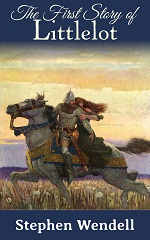 The First Story of Littlelot is an Arthurian legend with knights and damsels and other action figures.
The First Story of Littlelot is an Arthurian legend with knights and damsels and other action figures.
In his game of make-believe, a boy must make a choice—break his oath to the king or break the heart of the woman who gave him the most meaningful gift.
Preface
The valiant knight in shining armor rides a resplendent steed on dangerous adventures. He surmounts overwhelming obstacles, rights terrible wrongs, and rescues the damsel in distress.
That’s what I want to be when I grow up!
Alas, I was born centuries too late. As were you, Young Reader, if such might be your own grown-up ambition. Left to us in our times are stories of those chivalric heroes, models that we may yet apply to our modern lives.
The quintessential tale of noble knights is that of King Arthur and the knights of the Round Table as told by Sir Thomas Malory in Le Morte d’Arthur. Reputedly a knight himself, Malory compiled his fifteenth-century rendering from various sources, among them, the Vulgate Cycle, the Prose Tristan, and the Stanzaic Morte Arthur. Each of these drew on earlier works, including Geoffrey of Monmouth’s History of the Kings of Britain and a collection of stories by the French troubadour Chrétien de Troyes. In turn, Malory’s work inspired a profusion of novels, narrative poetry, films, and other forms, collectively known as “Arthurian legend.”
The First Story of Littlelot recounts the adventure of the most renowned of all the Round Table knights, Lancelot, and his rescue of Gwenevere, drawn from Book VII of Le Morte d’Arthur. My own retelling differs from Malory’s in length as well as in certain details.
Stephen Wendell
December 14, 2016
Paris, France
The First Story of
Littlelot
Full-Color Illustrated Edition
In his game of make-believe, a boy must make a choice—break his oath to the king or break the heart of the woman who gave him the most meaningful gift.
An Arthurian legend with knights and damsels and other action figures.
The frontispiece and six chapter illustrations by celebrated artists Arthur Rackham, N. C. Wyeth, Thomas Moran, and Herbert James Draper bring Littlelot’s Arthurian adventure to life in this beautiful paperback book.
Available in paperback and e-book.
The First Story of
Littlelot
An Arthurian legend with knights and damsels and other action figures.
In his game of make-believe, a boy must make a choice—break his oath to the king or break the heart of the woman who gave him the most meaningful gift.
Available in paperback and e-book.
The way opens between hedge rows. Birds chitter within. One enters by a narrow lane, and the world blooms into rosy hues. A soft breeze through branches carries pink petals, fluttering. Well dressed men and women, checkered blankets spread beneath them, clink glasses. Laughing children roll in lush green grass. Tiny birds flit from branch to branch, tree to tree, twittering the news: “Springtime, springtime! Springtime is here!”
I walked into a cherry orchard at the Parc de Sceaux. All the trees were in full bloom, all the people were there to see them, and everyone brought a picnic.
 A young man, wearing dark pants and white button-up shirt, set up a camera on a tripod. Its lens, as long as my forearm, extended toward hanging blossoms, dazzling in the sunlight. The hollow pop of a cork leaving a Champagne bottle turned heads and made a girl giggle.
A young man, wearing dark pants and white button-up shirt, set up a camera on a tripod. Its lens, as long as my forearm, extended toward hanging blossoms, dazzling in the sunlight. The hollow pop of a cork leaving a Champagne bottle turned heads and made a girl giggle.
“Is there a party?” I asked, my American accent coming through the French.
“Hanami,” he said with a Japanese accent, “ancient Japanese custom, big spring celebration.”
We chatted for a few minutes while he lined up a shot with the camera. I took a few photos as well and made a note to look up this custom when I got home. This is what I found:
In eighth-century Japan, neighboring Chinese culture was considered more sophisticated. Such was its influence that the Japanese capital, Nara, was modeled after its Chinese counterpart, including numerous plum trees imported from China. In the region, plum trees bloom in late February and mark the end of winter.
Emperor Saga in the early ninth century is credited as the first to throw a party in a blooming orchard. Thus hanami, “flower viewing” in Japanese, began among the elite of the imperial court.
Due to a rebellion in China, that country’s exports to Japan halted. The intercultural rupture is marked by the 894 abolition of Japan’s official delegations to China, which required an arduous crossing of the Sea of Japan. Reduced influence from the mainland allowed an independent Japanese culture to flourish, and the native cherry tree gained in popularity over the plum tree. Blooming at the end of March, cherry blossoms mark the arrival of spring.
History measures the popularity of plum and cherry blossoms by the number of mentions each receives in various ancient texts, such as chronicles, diaries, and poetry, including waka and haiku. So many mentions for plums in this century versus only this many for cherries. The next couple centuries see an increase in cherry mentions and a decrease in plums. Vote for your favorite thing in writing.
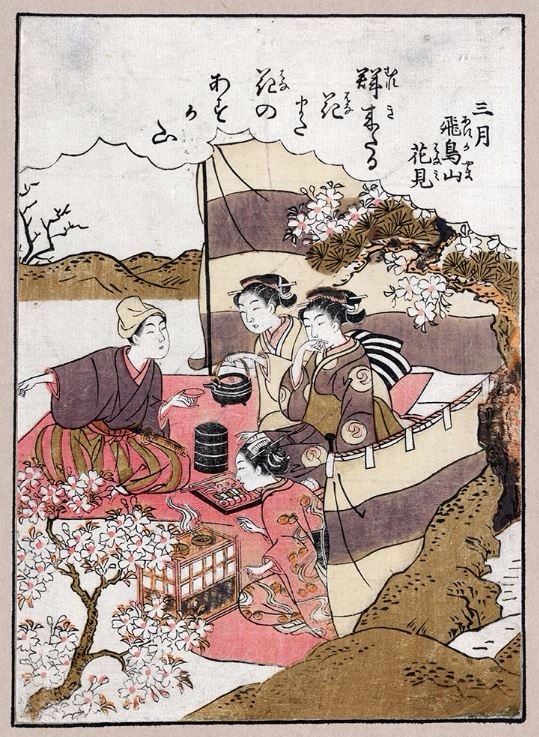
Hanami remained a practice of the elite until the eighteenth century. His people suffering from poverty and hunger, Shogun Tokugawa Yoshimune invited local subjects into a private cherry orchard to share in the springtime festival, which included a feast as well as cherry blossoms. The event was well received. The shogun then ordered the planting of cherry trees along rivers and lanes and encouraged the people to participate in the annual event.
Today, hanami is as popular as ever in Japan, and the custom has spread around the world. In France, the trees blossom mid-April, when some 200 Japanese cherry trees attract locals and tourists to two orchards in the Parc de Sceaux, south of Paris.
If you want to see the spectacle, it’s happening this week!
Stephen Wendell lives near the Parc de Sceaux, where he goes for a daily run. He is the author of the Littlelot series of children’s books and The Way to Vict’ry, a book of three haiku inspired by Sun Tzu, Matthieu Ricard, and a magpie flight instructor.
View of the north cherry tree orchard, west of the Grand Canal, Parc de Sceaux. If you miss the pink ones, the white cherry blossoms, in the south orchard farther down the lane, peak a couple weeks later.
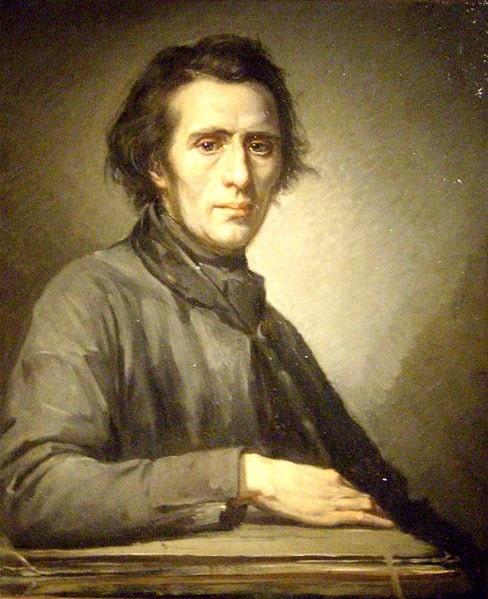
“You don’t mean to tell me that this young man made those drawings by himself!” said Mouchel.
The elder Millet defended his affirmation, saying he watched his son draw them. He had brought Jean-François to see this Cherbourg artist who was also a tutor. They showed him two drawings the boy had made, hoping Mouchel would take him on as pupil.
The younger Millet insisted on his sole authorship, and Mouchel was eventually convinced.
“Well, then,” he said to the father, “all I can say is, you will be damned for having kept him so long at the plough, for your boy has the making of a great painter in him.” (Cartwright 32)
Thus, Jean-François Millet went to study painting in Cherbourg. Of his first tutors, history records little. Alfred Sensier devotes a few pages to these two characters in his Millet biography. Those pages, including footnotes added by the editor Paul Mantz, may well have saved the names of Bon Dumoucel, called “Mouchel,” and Lucien-Théophile Langlois from history’s oubliette. Though my research is far from exhaustive, Sensier’s work is the source of every other reference to them I’ve so far found.
Sensier describes Mouchel as a curious character. A self-taught artist, he followed the neoclassical School of Jacques-Louis David. He began many large canvases but didn’t always finish them. On request of local clergy, he painted alter.jpgeces, which he then donated to the church.
Mouchel taught at his home-studio in a small valley on the edge of town, where he lived with his wife. He worked a garden beside a mill and had a pet pig whose language he understood and could speak. Sensier, less bold, writes, “pretended to understand” (emphasis mine).
As Millet’s tutor, he recognized genius in the young man and gave him free rein: “Draw what you like; choose anything of mine that you like to copy; follow your own inclination, and above all go to the Museum.” (Cartwright 33)
It was at the Thomas Henry Museum where a messenger found Jean-François to inform him of his father’s illness.
Months later, Millet returned to Cherbourg under another tutor. Théophile Langlois de Chévreville was a trained artist, student of Antoine-Jean Gros, also neoclassical. During his own studies, Langlois had traveled to Greece and Italy, a fact he made sure everyone knew. He was considered as Cherbourg’s best painter. Some years later, he would become a drawing professor at the town college.
Like Mouchel, seeing that he didn’t have much to teach the young man, Langlois gave his student much the same treatment as his predecessor. “Go to the Museum,” was a common refrain.
After less than a year, Langlois penned a letter to the Cherbourg town council to make Millet’s case. In the letter, he suggested that the town provide the promising artist with a scholarship to study in Paris. So confident was he in Millet’s talent, he dared to predict the future:
“Allow me, gentlemen, for once, to lift the veil of the future, and to promise you a place in the memory of mankind, if you help in this manner to endow our country with another great man.”
In January of 1837 with a Cherbourg scholarship of 600 francs, Jean-François Millet bid farewell to his mother and grandmother at Gruchy and rode by carriage to Paris.
Quoted dialog from Jean-François Millet, His Life and Letters by Julia Cartwright (London: Swan Sonnenshein & Co., 1896).
Biographical information from La vie et l’oeuvre de Jean-François Millet by Alfred Sensier (Paris: A. Quantin, 1881).
Twenty year-old Jean-François Millet went to study painting in Cherbourg, where some 70 years previously Thomas Henry was born.
Though educated in commerce, Henry had a taste for art. In his early career he went to Saint-Domingue, a lucrative French colony on the island of Hispaniola. He was a merchant there until a successful slave revolt, now known as the Haitian Revolution, put an end to the colony and created the Empire of Haiti in 1804.
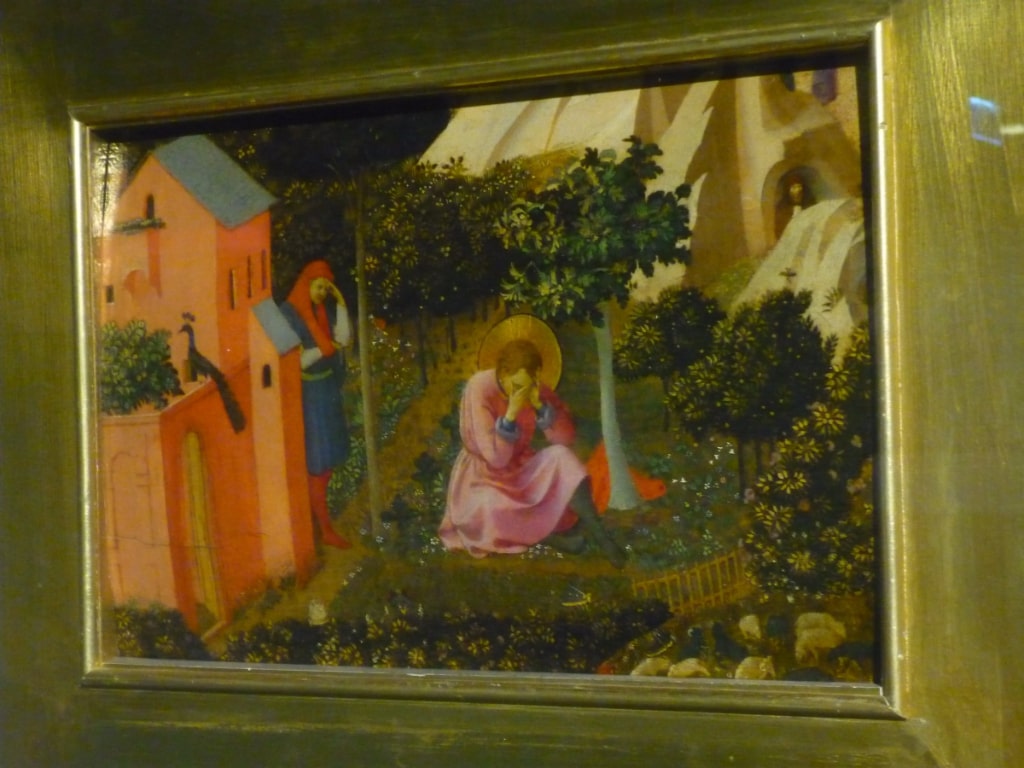
Having proved himself in business, back in France Henry went to Paris and became a painting restorer, then an accomplished artist as well as a successful art dealer. From this time onward he collected paintings and sculptures from the major movements in Western European art of the previous four centuries. He became a celebrated connoisseur, his opinion of a work’s provenance and of its quality being highly regarded.
By 1831, he had lost both sons and sensed his own life’s end. He began donating—anonymously—portions of his collection to his native town.
After receiving a significant number of these artworks, the Cherbourg town council decided to open a museum. An investigation revealed the donor’s name, and the Musée Thomas Henry opened its doors in 1835. Among its first visitors was Jean-François Millet, who came to copy the works of the masters as part of his studies.
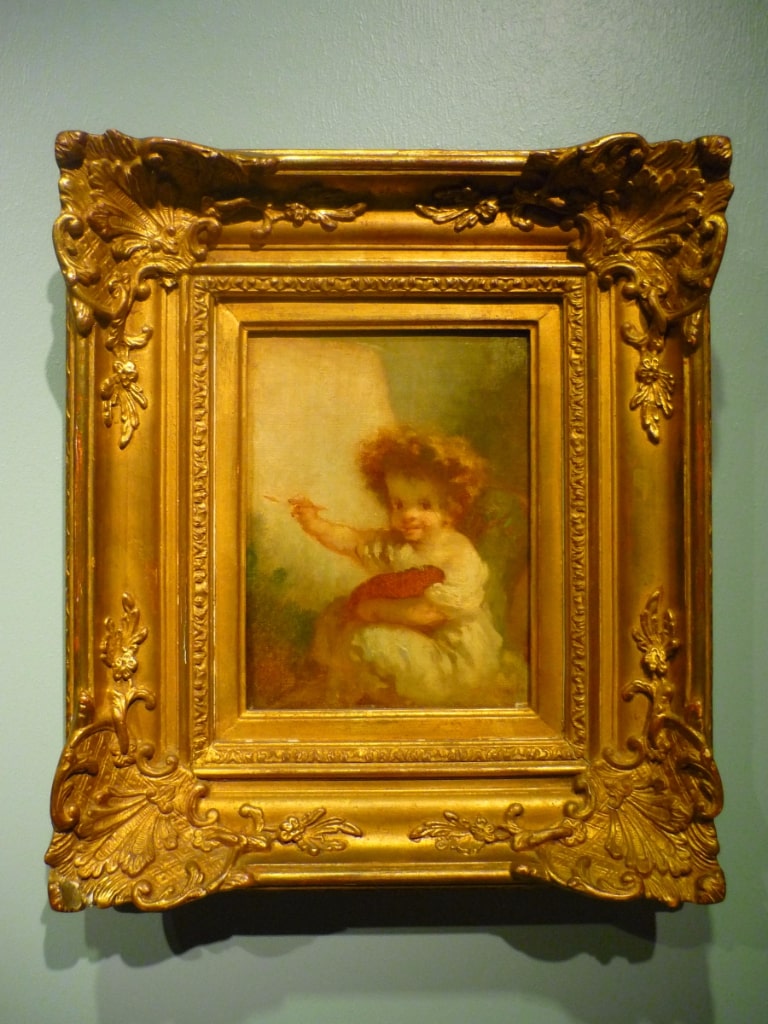
A later donation, that of Millet’s nephew Paul Ono in 1915, would add to the museum’s collection a large number of Millet’s early paintings. Among them were many of the student artist’s copies, which museum visitors can see beside the original.
Today, the Thomas Henry Museum holds the third largest Millet collection in the world.
 The Way to Vict’ry is an ebook of three haiku inspired by Sun Tzu, Matthieu Ricard, and a magpie flight instructor.
The Way to Vict’ry is an ebook of three haiku inspired by Sun Tzu, Matthieu Ricard, and a magpie flight instructor.
Preface
In Sun Tzu’s Art of War, the fifth-century BC Taoist author likens the successful battle plan to a watercourse: it follows the path of least resistance to its objective.
Buddhist monk Matthieu Ricard devotes a chapter of his book Happiness (Atlantic Books, 2012) to the ego. He suggests the ego, imposed as a shield, becomes a target, which attracts suffering.
These works inspired the first two haiku in this book.
And the magpie flight instructor? It’s one of a mated pair that makes its nest in the bay tree behind the house. The springtime garden is a cacophony of young magpies on flight training day.
In haiku form, the lessons are easier to retain. These three have become personal mantras.
Stephen Wendell
November 9, 2016
Paris, France
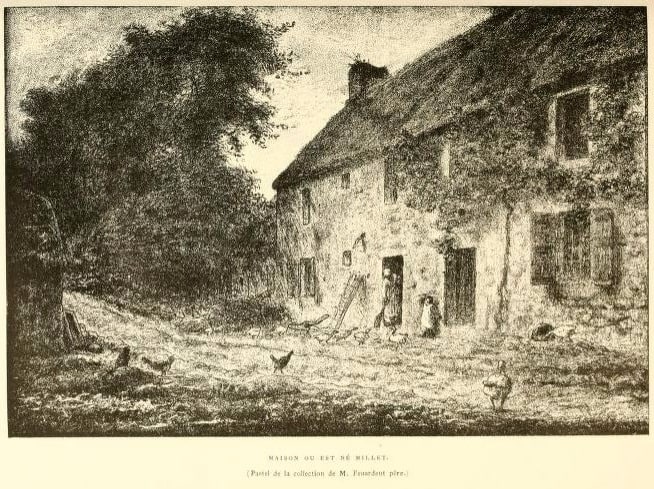
That the young Millet grew up bigger than the other kids his age and strong and curious, that his father was a farmer like his grandfather, that he was the oldest son of eight children and so was obliged to become a farmer as well, that he enjoyed the work and didn’t regret this duty, that he learned Latin and read the Bible and the Confessions of Saint Augustin in that language, that he loved to draw and had a natural talent for it—all this has little bearing on the legend which would be born nearer the end of his life than its beginning.
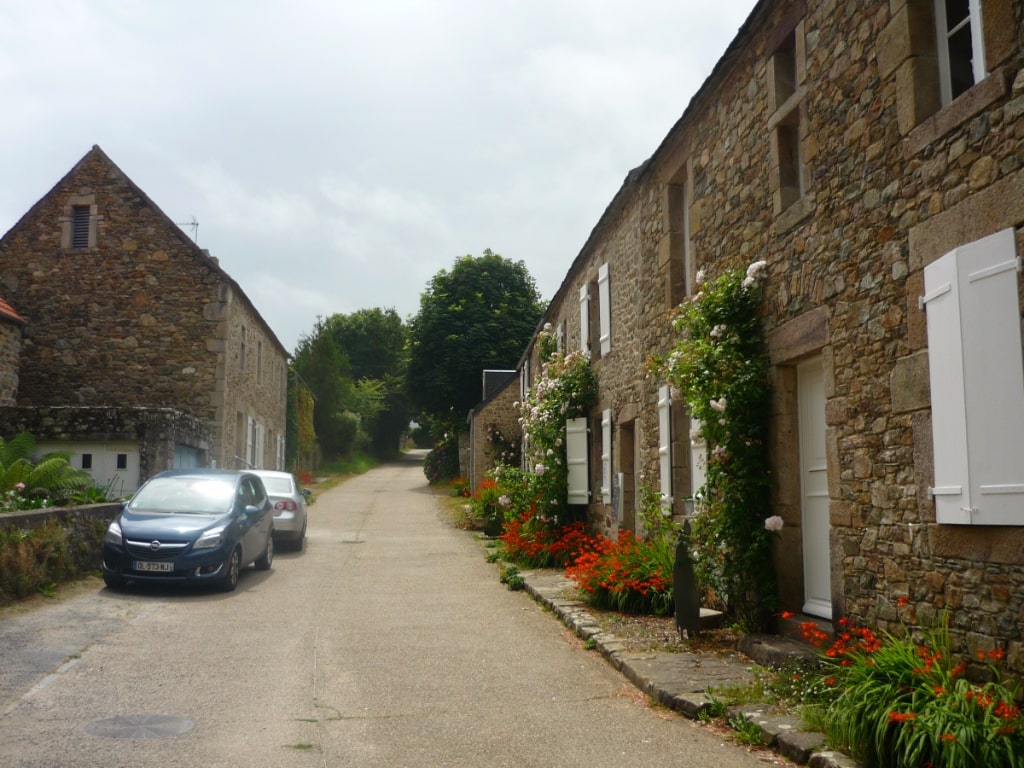
However, within the summary of the painter’s youth are two separate lessons concerning success: How much counts the encouragement of our loved ones, and how narrow is the window of opportunity.
At eighteen, Jean-François talked with his father about his desire to become an artist. His father said:
“My poor François, I see thou art troubled by the idea. I should gladly have sent you to have the trade of painting taught you, which they say is so fine, but you are the oldest boy, and I could not spare you; now that your brothers are older, I do not wish to prevent you from learning that which you are so anxious to know.” (Sensier 40)
So with his father’s encouragement, he went to Cherbourg to study painting. But only two months later the father was dying of a sudden illness. The son returned to Gruchy to sit at the deathbed.
Although the short time in Cherbourg had lit the passion within him, after his father’s death, Jean-François succumbed to his sense of family duty and stayed to run the farm. It was only by his grandmother’s insistence that he returned to his destiny:
“My François, you must accept the will of God; your father, my Jean-Louis, said you should be a painter; obey him, and go back to Cherbourg.” (Sensier 42)
How much counts the encouragement of loved ones toward our success! How narrow the window of opportunity!
This is the latest episode in A Pilgrimage to Barbizon. Follow this link to catch up on previous episodes (listed in chronological order). On Wednesday we’ll follow the fledgling painter to Cherbourg.
Quoted dialog from Jean-François Millet, Peasant and Painter. Alfred Sensier, Helena de Kay translator. Boston: James R. Osgood and Company, 1881.
Image “House where Millet was born” from Sensier’s original work, La vie et l’oeuvre de J.-F. Millet. Paris: A. Quantin, 1881.
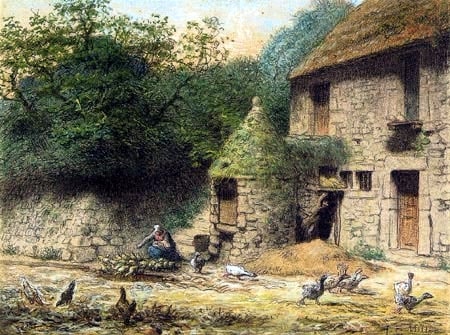
France in 1814 was a tumultuous country. The French Revolution, begun 25 years before, ended in 1799, but the Napoléonic wars followed. A young artillery officer during the revolution, a certain Bonaparte rose to power and established the First French Empire in 1804. Napoléon I fought a series of wars with his European neighbors then, in 1812, invaded Russia.
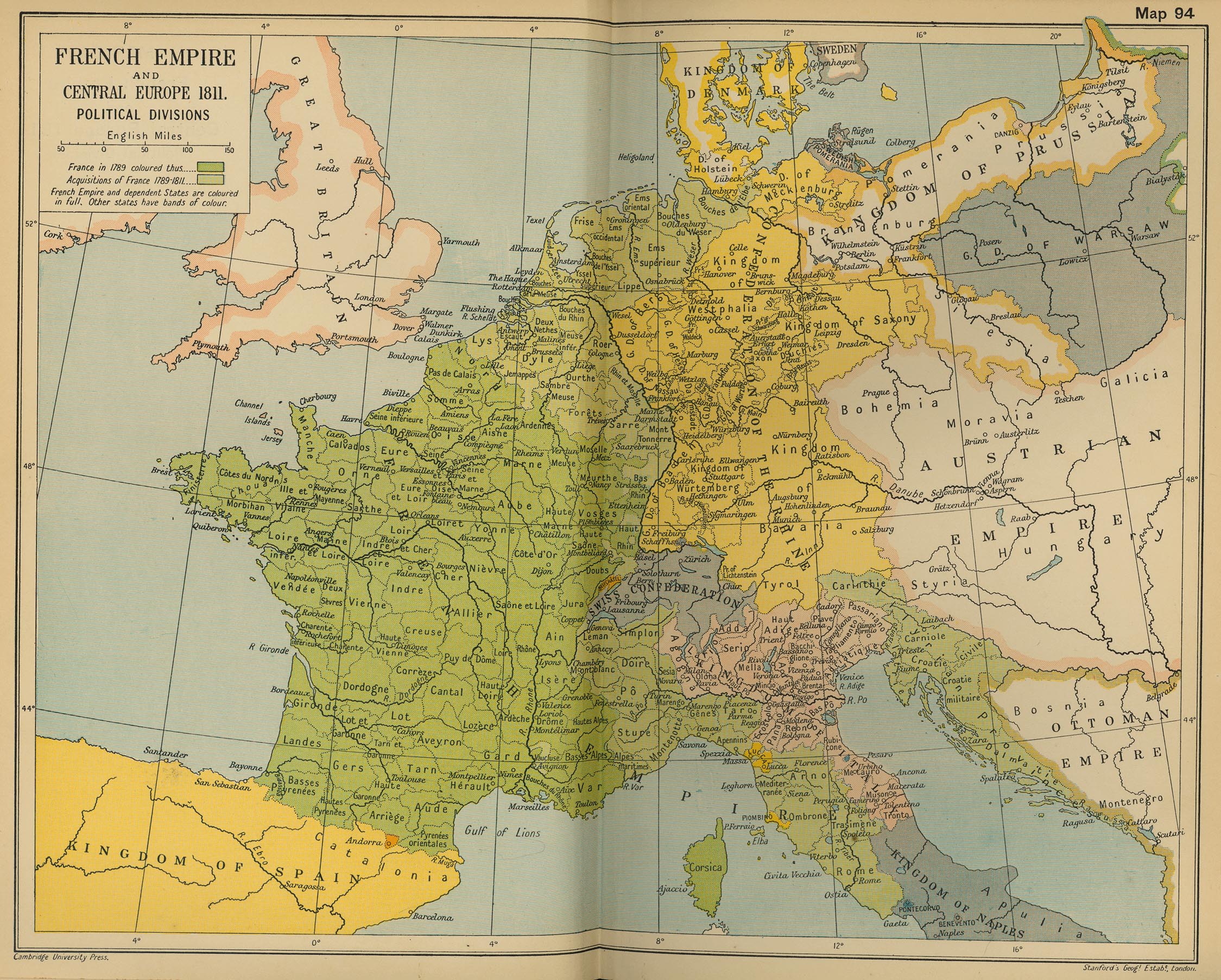 Map of the French Empire and Central Europe in 1811
Map of the French Empire and Central Europe in 1811
From The Cambridge Modern History Atlas. Ward, Prothero, Leathes editors. Cambridge: University Press, 1912 (455-6).
Allying with Prussia and Austria, Russia responded in kind. The allies captured Paris in the spring of 1814. Forcing the emperor to abdicate, they sent Napoléon into exile on the island of Elba, off the coast of Italy and near his home in Corsica. He would escape the island the following year and return to France to continue his aggression. Within a few months, Napoléon was defeated at the Battle of Waterloo. This time, he was exiled to Saint Helena, a small island in the middle of the South Atlantic. He didn’t escape again.
Meanwhile, in 1814, the Parisian “bistro” (Russian for “quickly”) was named by occupying soldiers pressed for time, immigrant American protestants established the American Church in Paris, and the long process of moving bones from the Holy Innocents Cemetery to the catacombs below Denfert-Rochereau was completed.
All this may have seemed far removed from Gruchy hamlet in the commune of Gréville on the Normandy coast, a week’s carriage ride north of Paris. Situated on the Cotentin Peninsula, which protrudes into the English Channel, Gruchy boasted not more than 25 thatched-roofed homes. These farmhouses lined either side of a single street, wide as a buggy. Fields beyond gave way to pastures and woodlands. Into this pastoral landscape was born Jean-François Millet, who would become known as the peasant painter.
 On the Normandy coast near Gruchy wind and rain are not uncommon in any season; late July 2016, this was the day’s best weather
On the Normandy coast near Gruchy wind and rain are not uncommon in any season; late July 2016, this was the day’s best weather
Terror wights don’t read. But Roy gets more fan mail than I do, so I read it to him. He really appreciates your kind words, and he adores the photographs and hand-drawn pictures.
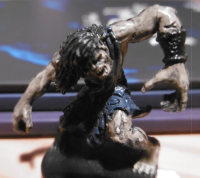 I made a page for Roy, so his fans can keep up with his latest exploits. Roy’s page has links to all the articles featuring your favorite terror wight, plus this candid shot I got of him earlier today. You can leave a message for Roy in the comments section.
I made a page for Roy, so his fans can keep up with his latest exploits. Roy’s page has links to all the articles featuring your favorite terror wight, plus this candid shot I got of him earlier today. You can leave a message for Roy in the comments section.
Roy really wants you to have a copy of his ebook. Right now, he’s giving away the Kindle edition of Littlelot and the Real Monster.
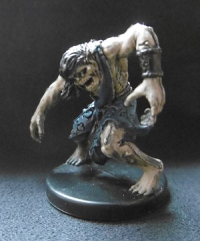 |
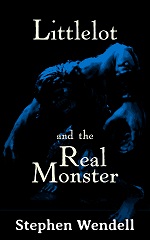 |
|
The terror wight still doesn’t grasp the concept of an electronic book.
“Give me a really big stack of books,” he said, “so I can give them away.”
I said, “I’ll give you an unlimited stack of books, Roy. Give away as many as you like.”
“Not big enough! I need a really big stack of books.”
To get your Kindle edition of Littlelot and the Real Monster from Roy’s “really big” stack, click this link to its Amazon page.
Get Littlelot and the Real Monster
The give-away ends Monday at midnight (Pacific time, GMT-8). That’s 9 a.m. in Paris, Roy’s bedtime. He hopes to go back to the figurine drawer empty handed.
Please don’t disappoint the terror wight!